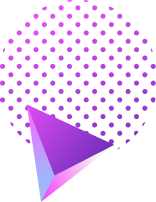



Awarded by ISTITUTO di Moda BURGO Milan, ITALY
This program is one of the best fashion design courses available, offering a comprehensive curriculum that prepares students for career opportunities in fashion designing.
Eligibility
10th / SSC / Intermediate / 10+2 / PUC / Graduation
Duration
1 Year
Mode
Regular


About the Diploma in Fashion Design Course
The Diploma in Fashion Design is an industry-focused program designed to equip students with technical skills and creative expertise required for the fashion garment industry. This course provides hands-on training in fabric evaluation, apparel construction, pattern making, fashion illustration, merchandising, and retailing, ensuring students are well-prepared for the fashion industry.


Career Opportunities
After completing the Diploma in Fashion Design, students can explore careers such as:
- Fashion Designer – Design clothing collections for brands or start your own label.
- Fashion Stylist – Provide styling expertise for individuals, celebrities, and media productions.
- Pattern Maker – Develop professional patterns for apparel production.
- Textile Designer – Work with fabric patterns and material innovation.
- Fashion Marketer & Merchandiser – Manage branding, retailing, and market trends for fashion businesses.
- Fashion Show Coordinator – Organize and manage fashion runway events.
Graduates will also be eligible for roles in fashion designing institutes with placement programs, offering a pathway into leading brands and global fashion houses.





Certificate Course in Fashion Design After Certification
This certificate program in fashion design blends technical expertise with artistic creativity. It refines a candidate’s conceptual and design skills within one year, offering a strong foundation in fashion design and garment making.
Through theoretical lectures and hands-on training, students develop innovative and creative skills. They learn color theory, pattern creation, garment composition, and cutting techniques. Additionally, they gain knowledge of current fashion industry trends and practical solutions.
Unlike a degree program, a certificate program in fashion design provides specialized learning in a shorter time frame, allowing students to focus on career-relevant skills.
Year Wise Course Syllabus!
Discover the Year-Wise Course Syllabus for our Diploma in Fashion Design, focusing on creativity, garment construction, and industry-relevant skills.
Year 1
- Fashion Illustration – Figure drawing, styling techniques, croquis development, and fabric rendering.
- Elements of Design – Study of design principles, color psychology, and consumer buying behavior.
- Pattern Making – Garment patterns, sewing techniques, and draping fundamentals.
- Garment Construction – Cutting, stitching, and fabric finishing techniques.
- Textile Science – I – Fabric types, dyeing processes, and textile care.
- Workshops & Industry Visits – Practical exposure to the fashion industry.
Year 2
- Advanced Pattern Making & Garment Construction – Detailed garment drafting and manufacturing techniques.
- Textile Science – II – Advanced study of weaving, fiber properties, and sustainability in textiles.
- Fashion Marketing & Merchandising – Branding, retail strategies, and global fashion trends.
- Digital Fashion Design – Training in Adobe Photoshop, Illustrator, CorelDRAW for learning digital fashion designing.
- Portfolio Development – Creation of a professional portfolio showcasing creativity and technical expertise.
- Project Work & Internship – Real-world experience through internships and live fashion projects.





Why Choose HIITMS Academy?
🎯 Industry-Focused Curriculum – Updated with the latest fashion trends.
🎯 State-of-the-Art Infrastructure – Equipped with high-end sewing machines, CAD software, and design labs.
🎯 Expert Faculty – Learn from experienced professionals in the fashion industry.
🎯 Internships & Live Projects – Work on real-time fashion assignments with top brands.
🎯 Placement Assistance – Get connected with leading fashion houses and brands for career opportunities.
🎯 Recognized as one of the best fashion design courses with career opportunities in fashion designing.





HEY STUDENTS GET A CHANCE TO WIN 100% SCHOLARSHIP*
Every Qualified Candidate will get an APPRECIATION CERTIFICATE & TROPHY

Partnered with ISTITUTO Di Moda BURGO – Milan for global excellence in fashion education.

10 CANDIDATES
1.6 LAKCH SCHOLARSHIP FOR EACH



